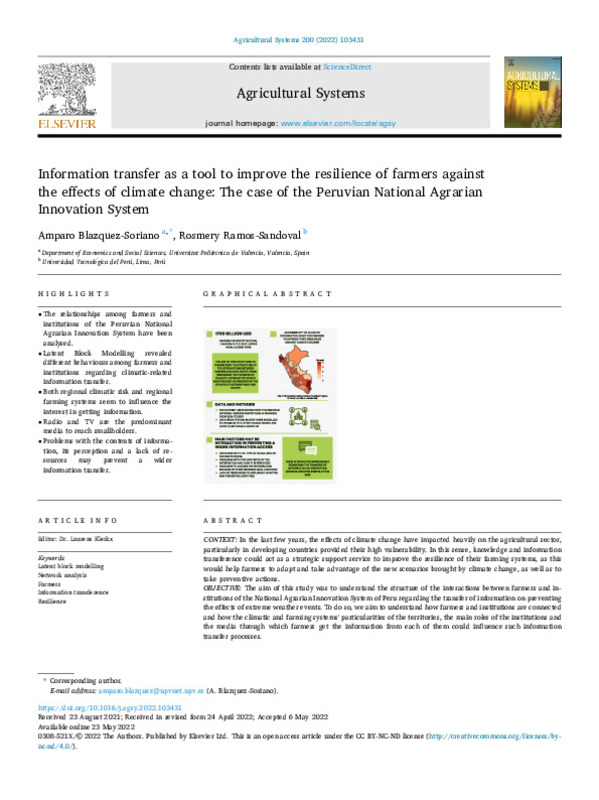JavaScript is disabled for your browser. Some features of this site may not work without it.
Buscar en RiuNet
Listar
Mi cuenta
Estadísticas
Ayuda RiuNet
Admin. UPV
Desde el lunes 3 y hasta el jueves 20 de marzo, RiuNet funcionará en modo de solo lectura a causa de su actualización a una nueva versión.
Information transfer as a tool to improve the resilience of farmers against the effects of climate change: The case of the Peruvian National Agrarian Innovation System
Mostrar el registro completo del ítem
Blazquez-Soriano, A.; Ramos-Sandoval, R. (2022). Information transfer as a tool to improve the resilience of farmers against the effects of climate change: The case of the Peruvian National Agrarian Innovation System. Agricultural Systems. 200. https://doi.org/10.1016/j.agsy.2022.103431
Por favor, use este identificador para citar o enlazar este ítem: http://hdl.handle.net/10251/193919
Ficheros en el ítem
Metadatos del ítem
| Título: | Information transfer as a tool to improve the resilience of farmers against the effects of climate change: The case of the Peruvian National Agrarian Innovation System | |
| Autor: | Ramos-Sandoval, Rosmery | |
| Entidad UPV: |
|
|
| Fecha difusión: |
|
|
| Resumen: |
[EN] CONTEXT: In the last few years, the effects of climate change have impacted heavily on the agricultural sector, particularly in developing countries provided their high vulnerability. In this sense, knowledge and ...[+]
|
|
| Palabras clave: |
|
|
| Derechos de uso: | Reconocimiento - No comercial - Sin obra derivada (by-nc-nd) | |
| Fuente: |
|
|
| DOI: |
|
|
| Editorial: |
|
|
| Versión del editor: | https://doi.org/10.1016/j.agsy.2022.103431 | |
| Código del Proyecto: |
|
|
| Agradecimientos: |
We would like to thank the two anonymous reviewers, as well as Dr. Vanesse Labeyrie and Dr. Laurens Klerkx for their helpful suggestions that have contributed to greatly improve the manuscript. We are also grateful to Dr. ...[+]
|
|
| Tipo: |
|









